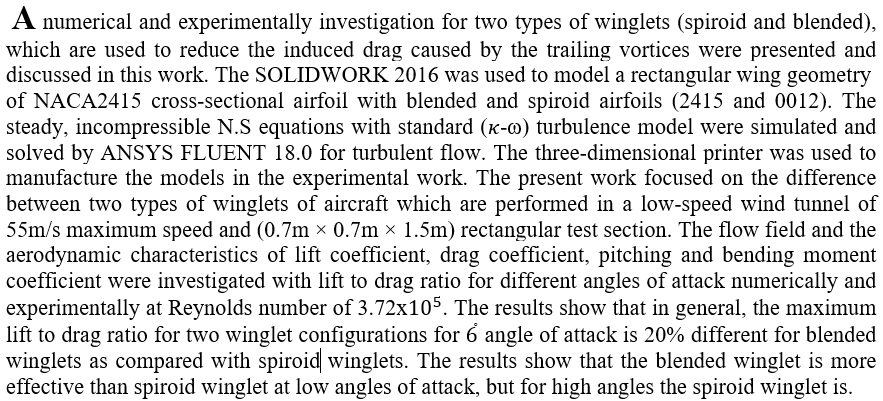A newly flow injection-turbidimetric method characterized by it is speed and sensitivity has been developed for the determination of Amiloride in pure and pharmaceutical preparations. It is based on the formation of yellowish white precipitate for the Amiloride-phosphomolybidic acid ion pair in aqueous medium. Turbidity was measured by Ayah 6Sx1-T-1D solar cell CFI analyser via the attenuation of incident light from the surfaces precipitated particles at 0-180. The Chemical and physical parameters were investigated. Linear dynamic range for the attenuation of incident light versus Amiloride concentration was of 0.005-10 mmol.L-1, with the correlation coefficient (r) of 0.9986 , while the percentage linearity (r2%) was 99.71%. The L.O.
... Show MoreA newly flow injection-turbidimetric method characterized by it is speed and sensitivity has been developed for the determination of Amiloride in pure and pharmaceutical preparations. It is based on the formation of yellowish white precipitate for the Amiloride-phosphomolybidic acid ion pair in aqueous medium. Turbidity was measured by Ayah 6Sx1-T-1D solar cell CFI analyser via the attenuation of incident light from the surfaces precipitated particles at 0-180. The Chemical and physical parameters were investigated. Linear dynamic range for the attenuation of incident light versus Amiloride concentration was of 0.005-10 mmol.L-1, with the correlation coefficient (r) of 0.9986 , while the percentage linearity (r2%) was 99.71%. The L.O.
... Show MoreThe reaction of 2-amino-benzothiazole with bis [O,O-2,3,O,O – 5,6 – (chloro(carboxylic) methiylidene) ] – L – ascorbic acid (L-AsCl2) gave new product 3-(Benzo[d]Thaizole-2-Yl) – 9-Oxo-6,7,7a,9-Tertrahydro-2H-2,10:4,7-Diepoxyfuro [3,2-f][1,5,3] Dioxazonine – 2,4 (3H) – Dicarboxylic Acid, Hydro-chloride (L-as-am)), which has been insulated and identified by (C, H, N) elemental microanalysis (Ft-IR),(U.v–vis), mass spectroscopy and H-NMR techniques. The (L-as am) ligand complexes were obtained by the reaction of (L-as-am) with [M(II) = Co,Ni,Cu, and Zn] metal ions. The synthesized complexes are characterized by Uv–Visible (Ft –IR), mass spectroscopy molar ratio, molar conductivity, and Magnetic susceptibility techniques. (
... Show MoreThe current work concerns preparing cobalt manganese ferrite (Co0.2Mn0.8Fe2O4) and decorating it with polyaniline (PAni) for supercapacitor applications. The X-ray diffraction findings (XRD) manifested a broad peak of PAni and a cubic structure of cobalt manganese ferrite with crystal sizes between 21 nm. The pictures were taken with a field emission scanning electron microscope (FE-SEM), which evidenced that the PAni has nanofibers (NFs) structures, grain size 33 – 55 nm, according to the method of preparation, where the hydrothermal method was used. The magnetic measurements (VSM) that were conducted at room temperature showed that the samples had definite magnetic properties. Additionally, it was noted that the saturation magnetizatio
... Show More (5)
(5)
 (6)
(6)
 (4)
(4)
 (3)
(3)
In this research, thin films of CdO: Mg and n-CdO: Mg/ p-Si heterojunction with thickness (500±50) nm have been deposited at R.T (300 K) by thermal evaporation technique. These samples have been annealed at different annealing temperatures (373 and 473) K for one hour. Structural, optical and electrical properties of {CdO: Mg (1%)} films deposited on glass substrate as a function of annealing temperature are studied in detail. The C-V measurement of n-CdO: Mg/ p-Si heterojunction (HJ) at frequency (100 KHz) at different annealing temperatures have shown that these HJ were of abrupt type and the builtin potential (Vbi) increase as the annealing temperature increases. The I-V characteristics of heterojunction prepared under dark case at
... Show MoreThe present study was carried out in the nursery at Al – Dora (Baghdad). During spring 2015 under green hous conditions. The aim was to evaluate the effect of different concentration (0, 1.25 and 2.5) g./l of aqueous Ajwa date fruit extract on different cutting position (basal, sub terminal and terminal) for different dipping times (24, 48) hours, on cassia stem cuttings. After 2 months of planting the results showed that the 2.5 gm. /l of Ajwa date extract with basal cuttings for 48 dipping times accelerated the time of rooting to 3.7 weeks compared to 8 weeks in control treatment. This treatment increased rooting percentage to 77.7% compared to 0% in control treatment. It gave the highest value of both rooting numbers 2.2 per cutting
... Show MoreIn light of increasing demand for energy consumption due to life complexity and its requirements, which reflected on architecture in type and size, Environmental challenges have emerged in the need to reduce emissions and power consumption within the construction sector. Which urged designers to improve the environmental performance of buildings by adopting new design approaches, Invest digital technology to facilitate design decision-making, in short time, effort and cost. Which doesn’t stop at the limits of acceptable efficiency, but extends to the level of (the highest performance), which doesn’t provide by traditional approaches that adopted by researchers and local institutions in their studies and architectural practices, limit
... Show MoreThe reaction of LAs-Cl8 : [ (2,2- (1-(3,4-bis(carboxylicdichloromethoxy)-5-oxo-2,5dihydrofuran-2-yl)ethane – 1,2-diyl)bis(2,2-dichloroacetic acid)]with sodium azide in ethanol with drops of distilled water has been investigated . The new product L-AZ :(3Z ,5Z,8Z)-2azido-8-[azido(3Z,5Z)-2-azido-2,6-bis(azidocarbonyl)-8,9-dihydro-2H-1,7-dioxa-3,4,5triazonine-9-yl]methyl]-9-[(1-azido-1-hydroxy)methyl]-2H-1,7-dioxa-3,4,5-triazonine – 2,6 – dicarbonylazide was isolated and characterized by elemental analysis (C.H.N) , 1H-NMR , Mass spectrum and Fourier transform infrared spectrophotometer (FT-IR) . The reaction of the L-AZ withM+n: [ ( VO(II) , Cr(III) ,Mn(II) , Co(II) , Ni(II) , Cu(II) , Zn(II) , Cd(II) and
... Show More
